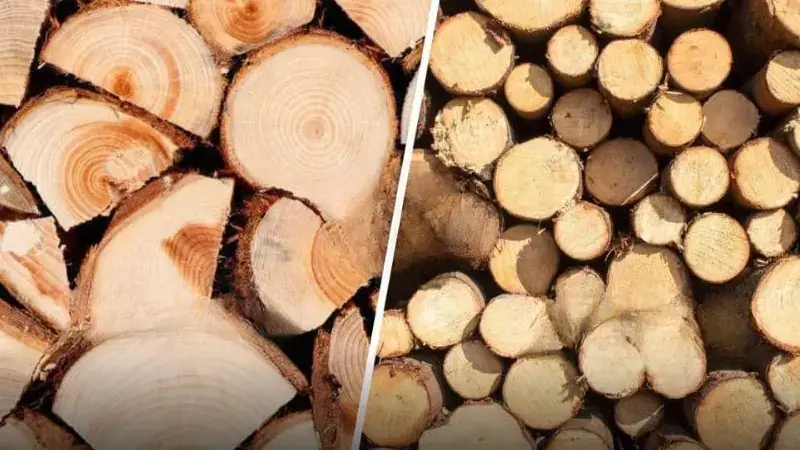
Softwood vs Hardwood: How to Choose the Right Material for Your Furniture
When embarking on a furniture-buying or woodworking journey, one of the
most fundamental decisions you’ll face is choosing between hardwood and softwood. Despite their
names, the terms "hardwood" and "softwood" don't always refer to the actual density of the wood.
Instead, they are botanical classifications based on the type of tree the wood comes from.
Understanding the key differences is essential for making a choice that aligns with your project's
needs, budget, and aesthetic goals. It’s an important consideration when buying top
furniture in Indore.
Understanding the Classification
- Hardwood comes
from deciduous trees, which are broadleaf trees that typically shed their leaves annually
(e.g., oak, maple, walnut, cherry). These trees grow slower, resulting in a denser and more
complex cellular structure.
- Softwood comes
from coniferous trees, which are evergreen trees with needles and cones (e.g., pine, spruce,
cedar, fir). These trees grow much faster, leading to a less dense, simpler cellular
structure.
While most hardwoods are indeed harder than most softwoods, there are
notable exceptions. For instance, balsa wood is a hardwood that is extremely soft, while yew is a
softwood that is harder than many hardwoods.
Durability and Longevity: The Ultimate Test
For furniture, the primary concern is how well the material will stand
up to daily use.
- Hardwood: Due to
its high density, hardwood is exceptionally durable and resistant to scratches, dents, and
wear. This makes it the ideal choice for high-traffic pieces that will see heavy use, such
as dining tables, chairs, and flooring. Hardwood furniture is a long-term investment, often
lasting for generations with proper care. Its durability also makes it more resistant to
fire. You will find a wooden bed manufacturer in Indore using both materials.
- Softwood:
Softwood is less dense and, therefore, more susceptible to dents and scratches. While still
strong enough for many applications, it's generally better suited for lighter-duty furniture
like bookshelves, dressers, or decorative pieces that won’t be subjected to frequent abuse.
Softwoods like pine can develop a charming, rustic patina over time as they collect minor
dings and marks, a look that many people actively seek out.
Verdict: For furniture that needs to withstand the test of time
and heavy use, hardwood is the clear winner.
Aesthetics and Finish: The Look and Feel
The natural beauty of the wood grain and how it takes a finish are
crucial for the final look of your furniture.
- Hardwood:
Hardwoods are prized for their intricate and often dramatic grain patterns, as well as a
rich variety of colors ranging from the deep reds of cherry to the dark chocolate of walnut
and the light tones of maple. Their tight grain can give a smooth, refined finish that is
perfect for elegant, formal furniture styles.
- Softwood:
Softwoods typically have a straighter, more uniform grain with a lighter color palette,
often with visible knots. This provides a natural, rustic, and cozy feel that is well-suited
for farmhouse, cottage, or casual interior styles. Because of their porous nature, softwoods
tend to absorb stains and paints more readily, making them a great choice for projects where
you plan to change the color.
Verdict: Your choice here depends on your desired aesthetic.
Hardwood offers a luxurious and classic look, while
softwood provides a more rustic and customizable
charm.
Workability: A DIYer's Consideration
If you're a woodworker or plan to take on a DIY project, the ease of
working with the material is a key factor.
- Hardwood: The
density and hardness of hardwood make it challenging to cut, shape, and join. It requires
sharper tools and more effort, and it can be a frustrating experience for beginners.
However, this same hardness allows for incredibly precise joinery and clean, intricate
carvings.
- Softwood:
Softwood is much easier to cut and shape, making it a favorite for novice woodworkers and
DIY enthusiasts. It is lighter and more forgiving on tools. This ease of workability means
you can often complete projects faster and with less specialized equipment.
Verdict: For DIY projects and ease of use, softwood is
the more accessible choice.
Cost and Sustainability: Balancing Budget and Ethics
The price of wood and its environmental impact are becoming increasingly
important factors in a purchase decision. Many top 10 furniture stores in Indore will highlight the sustainability of their products.
- Hardwood:
Hardwood trees grow slowly, often taking decades or even a century to mature. This slow
growth rate, combined with high demand, makes hardwood a more expensive option. From a
sustainability perspective, it is critical to ensure that hardwoods are sourced from
well-managed, certified forests to avoid contributing to deforestation.
- Softwood:
Softwood trees grow much faster and are widely available from sustainably managed forests.
This abundance and quick growth rate make softwood a significantly more affordable material.
Its eco-friendliness and lower price point make it a popular choice for large-scale
construction and budget-conscious furniture.
Verdict: Softwood is the winner in both affordability and
sustainability.
Final Choice: Which One Is Right for You?
Ultimately, the best wood for your furniture depends on your specific
needs:
- Choose Hardwood if: You are investing in a high-quality, long-lasting piece of
furniture for a high-traffic area. You prioritize durability, a luxurious aesthetic, and a
piece that can become a family heirloom.
- Choose Softwood if: You are working on a budget, need a material that is easy to work
with for a DIY project, or prefer a rustic, charming look. It is an excellent choice for
items like shelving, accent pieces, or a bed frame.


